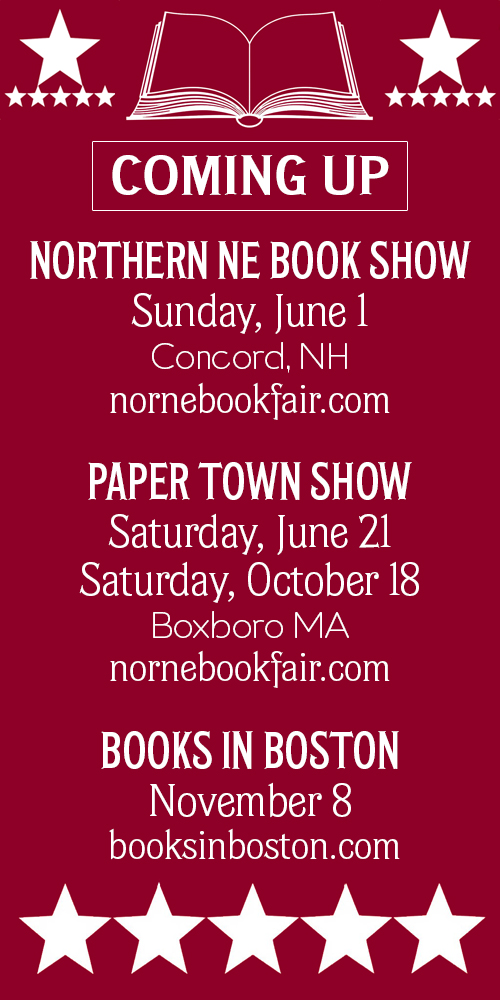Works of Art
When I was young and easy, beneath the pines of dear old Bowdoin (to mix the words of Dylan Thomas with the old college song), Professor Herbert Ross Brown, Ph.D., Litt.D., L.L.D., Managing Editor of The New England Quarterly for decades while Samuel Elliot Morrison was Editor in Chief, senior member of the faculty, former head of the English Department, and my closest friend in college—and for all these reasons widely if unwisely despised by my classmates, one of whom (the president of my class, Tom Allen, now a U.S. Senator or something, has stopped telephoning me for money)… Herbie Brown (HRB to me) was for twenty years my closest friend, albeit forty years older than I. I am proud to have been mocked on the same pedestal with him when, rightly or wrongly, we did not join The March in 1967. He taught me nothing about grammar: indeed, for I was a Latin scholar as he amazingly was not; but he taught me about the semi-colon. We debated in the Union at midnight whether when Macbeth says, “No, this my hand will rather / The multitudinous seas incarnadine, / Making the green one red,” “the green one” is literally the sea and “one red” a compound adjectival objective complement, or is “green” metonymy for the sea and “one red” a compound objective complement following a factitive participle? These are deep waters, Watson, rarely plumbed here in Kennebunkport, my native place; but H.R. Brown disdained my latter reading (to me at the time 100% original) as smacking of the likes of Harold Bloom (of whom at that time I had not previously heard). HRB loved me for the dangers I had passed, and I loved him that he did pity them (Othello); he taught me nothing about how to read, for I had learned that at Hebron Academy, and I learned it about poetry later and better from a book by that same notorious Harold Bloom, The Visionary Company. I can’t say that Herbert Ross Brown taught me how to live, for no man ought to impose that on another; but he taught me the professorial dignity and oratorical ease upon which for thirty-six years teaching I coasted happily and upon which, with all seeming modesty, I thrive in retirement. “Upon such blessings, my Cordelia, the gods themselves pour incense.” “A regimental stripe is always an appropriate tie,” he taught me. True, until in a pub in Canterbury my tie was challenged to the tune of six or eight rounds, and we saw Canterbury Cathedral in an appropriate regimental glow.
A week or two ago, I decided to re-read (after 40 years) some of the novels HRB recommended in 1967, as I graduated from Bowdoin, though they were then, as now, academically out of favor, explicitly not offered in his course in American Literature. I did not read the assigned Willa Cather or Hemingway, or Faulkner: HRB, then approaching my age now, was so bold as to say that “Faulkner needs to be translated into English.” He assigned him nonetheless. But he knew secret novels of great magnitude that somehow couldn’t qualify for the quasi curriculum: William Dean Howells’s The Rise of Silas Lapham; Harold Frederic’s The Damnation of Theron Ware; and the inestimably underestimated great novels of Sinclair Lewis… as he and I regarded them in 1967. Reading some of them again 40 years later was a dangerous experiment: which of us might not have stood the test of time? Having read most of Lewis’s novels years ago, on today’s laboratory table I placed his two greatest works, Main Street (1920) and Babbitt (1922), and the sleeper that has been for some personal reasons a favorite, Work of Art (1934).
Main Street (1920) foresees the muddle of young women of the sixties, which I overlooked much as they overlooked me: educated, ambitious, naïve, and about to be able to vote, Carol Milford, about to graduate from Blodgett College “on the edge of Minneapolis,” is “a girl on a hilltop; credulous, plastic, young; drinking the air as she longed to drink life. The eternal aching comedy of expectant youth.” I suggest that these images are clichés now partly because Sinclair Lewis articulated them in 1920; and “the eternal aching comedy of expectant youth” is of course a truth ne’er more well expressed even by the ancients. In 1972, against all odds except the approval of O.B. Davis, my revered Chairman of English at Kent School, I taught this novel to a class of seventeen 10th grade girls. “Suffrage” and “Prohibition” we skipped lightly over; but those girls lived the life of Carol, who married Dr. Will Kennicott and returned with him to his native Gopher Prairie…Main Street. Gossip, drabness, banality, and the plight of a smart but sometimes silly woman were meat and drink to those young women (girls, then) in my classroom. They loved the book—or seemed to, which experienced teachers in my readership will understand is the same thing. But even in 1972, the 1920 novel was dated, stilted, stuffy, coy…and, I think, wondering how I got away with teaching it to 16-year-old girls, truly brilliant in the romantic realism that John Updike perfected thirty years later: the discovery that “real” (as opposed to imagined) things can be marvelous, wonderful, and visionary.
“The greatest mystery about a human being is not his reaction to sex or praise, but the manner in which he contrives to put in twenty-four hours a day” (Main Street, Chapter 22). “But I, when I am stronger, and can choose what I’m to do, / O Leerie, I’ll go round at night,/ And light the lamps with you” says the little boy in Robert Louis Stevenson’s poem, while Edna St. Vincent Millay answers, with somewhat more sophistication but no greater poetry, “What lips my lips have kissed, or where, or why, / I have forgotten.” (The boy in A Child’s Garden of Verses wishes not to become a banker, like his Papa, but a lamp-lighter; the middle-aged woman in Millay’s perfect poetry lies: she has not forgotten. Lewis’s sex and praise are metonymy for love and ambition—the source of many more lives and poems than the two I have just cited, and he did it in a sentence. In By Love Possessed [1957], James Gould Cozzens—a Kent School alumnus, incidentally—has his protagonist Arthur Winner, perhaps echoing Henry James, reflect that we have nothing to deal with besides “time, thought, love, and money.” Lewis had synthesized these into “sex and praise” a quarter of a century earlier.)
Like Dickens’s Pecksniff, Pickwick, Podsnap, Mrs. Gamp, and Scrooge, Sinclair Lewis’s Babbitt is a character whose name is in the dictionary: “Babbitt, n. A business or professional man who adheres to the social and ethical standards of his group;—used derogatorily.” (Webster’s New Collegiate Dictionary). “A smugly conventional person interested chiefly in business or social success and indifferent to cultural values.” (New World Dictionary). That’s, as George Babbitt would say, him. Dickens’s Pumblechook, with a dash of Ralph Nickleby: a royal pain…but at heart a fine father, a good husband, and a strangely strong man, not yet bound though enticed by the bright bonds of the technology new in 1922, to which we are now abject uncomplaining, sickening if not sickened slaves. Sinclair Lewis could hardly have imagined the obscene horrors of our time—e-mail, voice-mail, call-waiting, sandals, and other things I dare not name: but no novelist of our time has better understood or better expressed, variously, welcome disdain for the simplest facet of our daily plight: the public flourishing of bare-naked banality and bodily disgrace.
In Work of Art (1934), a novel not widely known even along the dismal trails of American literature blazed by Henry David Thoreau (that cracked and meatless nut) in Concord, Lewis accomplishes I think something akin to what Shakespeare accomplishes with Prospero: a commentary on his own art. Set in the Housatonic Valley (as I was, for 32 years), it is the life-long story of Myron Weagle and his brother, Ora. Ora is the Poet, who at first we are enticed to believe will create the Work of Art…which at last at its best for him emerges as well-paid Hollywood doggerel, at worst in his job as editor and advertising manager of the Hidden Sex Truths Book Publishing Company, from which he was fired “for having offered to teach hidden sex truths to the stenographers.” Ora the Artist is a four-flusher, a deadbeat, a drunkard, and a womanizer, ever stomping sour grapes. Myron the Hotel Man is stolid, unimaginative, studious and hence learned about his trade, fussy, puritanical, honest to a fault, and—ironically—visionary…like Bill Marriott. The Work of Art of the title is Myron Weagle’s Perfect Inn…which throughout the novel is laboriously, obviously, and (to me) gratifyingly treated metaphorically as a poem…and that is what it is. (Greek p??e?? = “to make.”)
In this novel Lewis disputes (and, I think, celebrates) his own previous genius: he converts Babbitt, the stupid realtor, into Myron Weagle, the innkeeper of the perfect inn devoid of clichés; in brother Ora he subsumes all the dim-wit Booster ne’er-do-wells of Babbit’s Zenith; he converts Carol Kennicott (Dr. Will’s wife), the sometimes silly but “emancipated” woman, into a genuinely stupid but loyal and loving and wholly free fat Effie May. Able like few other authors to fool around with his own creations, he makes (compellingly and movingly) an artist and hero of a man who never read or did or envisioned anything unless it was about plumbing or heating or white sauce or comfortable furniture.
Like the works of his contemporary Kenneth Roberts, this Lewis novel is laden with fact: many dates (May 27th, 1927, “just two weeks before the day set for the opening” of the Black Thread Inn), names (Statler and Palmer and other hoteliers), places (New York and Akron, Torrington and Black Thread, Connecticut, which I see as Cornwall). Like its protagonist Myron Weagle, the novel is dated, dull, informative, perfectly painted, and predictable, like a Rembrandt: in short, it is A Work of Art.
Mark Schorer, the scholarly biographical authority on Lewis, records that Dickens was Lewis’s favorite novelist. No debate, in my opinion: Lewis is America’s Dickens. Of course, I have read but little Hemingway, and I regard John Updike as one of the greatest poets of our time and his Rabbit novels as uniquely bridging—even filling, superbly—a gap between two centuries. But Sinclair Lewis, essentially a satirist (as Dickens essentially was not, nor is Updike either), achieved like the later Dickens (I’m thinking of Our Mutual Friend) a romantic realism ahead of his time that even John Updike may have enjoyed while perhaps surpassing it.
The doom of the satirist is not so much to be mocked by the meat he feeds on as to be ignored by it. Ironically, the genius of Lewis’s creation of Babbitt is that Babbitt will never see himself, while the rest of us try to work him daily out of our lives along with King Lear and Othello and others whom we hope to avoid being. Today I have seen a hundred Hester Prynnes and Father Dimmesdales in Kennebunkport’s Dock Square, only modestly ugly these days in their sandals and shorts, working out presumably (in the phrase of T.S. Eliot) “with diligence” their temporary and imaginary stress-free lives on vacation by being unclad. Sad (and repulsive) to see. Beside them in cheap caps and sun-glasses parade the very rich, the more extravagantly shoeless, bestrewn with silver and gold ringlets in regions better left unknown. The genius over-view and insight of Sinclair Lewis had these horrors in control in Work of Art nearly a century ago, when a nice place meant nice clothes…or, at least, clothes. Nobody listened. Apparently, nobody read. Or cared. So here we are.
The experiment is, at least in its elementary stages, complete. The three novels here addressed have, for me, withstood the perhaps childish test of time. Each after 40 years is still brilliant. Is this acritical nostalgia or, as I devoutly surmise, critical rejuvenation? Helen Gardner, in The Business of Criticism, says that “A passion well painted will be true for all time.” Nathan Dane II, Chairman of Classical Studies and my other closest friend at Bowdoin, accepted the Winckley Professorship in a learned and lengthy address about the works of Homer, concluding with a deliberately homely question: “Is it the work of art, or the eternal truth?” To which he provided his answer, which I have loved and lived with for forty years: “The work of art is the eternal truth.”
If in his sandals and sun-glasses and backwards baseball cap the Man on the Street in Kennebunkport’s Dock Square does not these days read Sinclair Lewis, he doesn’t read Homer either, and certainly he doesn’t read this. Works of Art and Eternal Truths are as naught to him, and (luckily for him) he can’t see himself in a mirror. Sinclair Lewis, at least as perceptive, was oddly more tolerant of that truth than I, and he produced works of art to prove it.
Charles E. Gould, Jr. is a retired member of the English department at Kent School, an antiquarian bookseller, and P.G. Wodehouse specialist. He lives in Kennebunkport, ME.


























